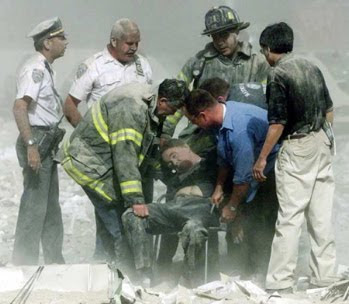 |
| "Pup" |
It's all too cruel, the relatively brief time our beloved companion is allowed to stay. When we have to let go, looking into his or her longing eyes as ours fill up with tears, the sensation comes from the depths of Hell. We may have done this before with other furry friends but it never, ever gets easier. You leave the vet's office, barely seeing or feeling anything while floating through grief's cold fog.
What in God's name will I do now?
The face above is the Black Lab/Springer Spaniel my daughters simply call "Pup." She came into our lives nine years ago this fall. She's still with us, yes, healthy and vibrant and equipped with a bark that can practically shatter glass (and eardrums.)
Dog lovers will understand how much more Pup is to me than just a family dog. She is one of the greatest gifts of unconditional love, devotion, and diversion. But Pup is serenity, too. Few things so calming as her nuzzling that canine head into mine. Scratching her chest as her massive paws fling themselves in the air. Hearing that soft yowl. Getting face drenched in dog slobber.
I can not and will not ponder the dreaded day when, as dog lover Mr. Kipling described it, I'll have to "give my heart to a dog to tear." But on this late night, I'm thinking of someone very close who's heart is in pieces. And so mine, too. One of the first memories I have of her Yellow Lab "Christina" was as a bursting-with-joy little puppy on a beach 14 years ago.
She loved that dog like nothing else, carefully preparing her meals, walking her religiously, taking her everywhere. When her Christina really began slowing down and had tender paws, she saw to it that she had special shoes to wear. I well understood why that dog was in so many ways her world.
But at 14, Christina's body was in the kind of pain that would not subside. She could no longer eat. So yesterday, she had to let Christina go. The little bed is now empty. As empty as the feeling she has tonight. Much, much more. My heart's in pieces and I can't see too good right now.
This poignant video is about another Yellow Lab who passed away this year, like Christina, at the age of 14. Her name was "Patsy."
Rest in sweet peace, Christina and Patsy.
I'm thinking about that saying from the Book of Revelation, that God will wipe away all our tears. Eventually.
"Buy a pup and your money will buy
Love unflinching that cannot lie--
Perfect passion and worship fed
By a kick in the ribs or a pat on the head.
Nevertheless it is hardly fair
To risk your heart to a dog to tear.
When the body that lived at your single will,
With its whimper of welcome, is stilled (how still!)
When the spirit that answered your every mood
Is gone--wherever it goes--for good,
You will discover how much you care,
And will give your heart to a dog to tear.
Though it is not always the case, I believe,
That the longer we've kept 'em, the more do we grieve:
For, when debts are payable, right or wrong,
A short-term loan is as bad as a long--
So why in--Heaven (before we are there)
Should we give our hearts to a dog to tear?"
--Rudyard Kipling
























